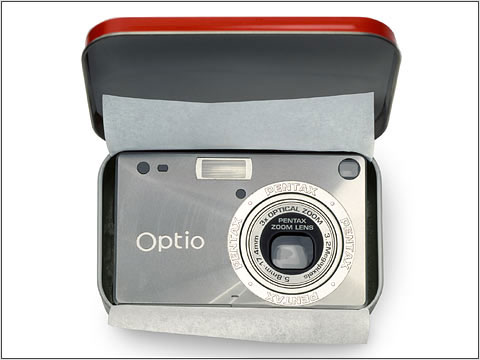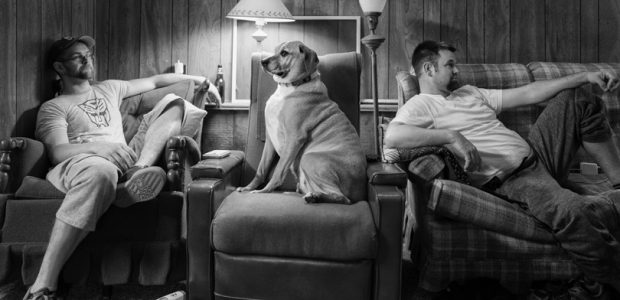The Case Against Zooms
I’m well known for having a prejudice against zoom lenses. I generally don’t like them, generally don’t shoot with them, and generally don’t recommend them.
Again and again, I’m asked to explain this, usually in a sort of bemused way, as if I’m some sort of strange curiosity who can’t get along with the other kids on the playground. Everybody uses zooms, right? Why “limit” yourself? As if I suffer from some sort of cantankerous hard-heartedness and haven’t thought out my opinion. So here, once again, is my case against zooms.
Learning How to Visualize
The only reason not to shoot with a zoom lens is this: a zoom lens has no point of view. A fixed-focal length (a.k.a. “prime”) lens imposes its point of view on you, and, consequently, you can learn to impose its point of view on the world. If you routinely photograph with a fixed-focal-length lens, sooner or later you will not need to look through your camera to know what the lens will see — your eyes will know, your mind will know. You won’t even need your camerawithyou to organize pictures out of the visual chaos of the world. Your eyes and your brain will be able to visualize without aid from the viewfinder.
A zoom is a crutch to aid visualization, but, ironically, it is an impediment to learning how to visualize. If one wants to learn how a camera sees, the best and easiest way is to deal with a lens you can learn, instead of a lens that’s a chameleon.
Are there other disadvantages of zooms? Of course. For one, they are usually as large as the largest focal length lens they replace, and as slow as the slowest focal length lens they replace. Plus, they add another control which must be manipulated in between two events that ought to be linked as closely as possible: recognizing a picture and taking the picture. Many times, one might have time for this. But maybe not.
Can good photographers who know how to visualize already use zooms effectively? The answer has to be yes. Are zooms often useful when you can’t choose your standpoint, as when you’re behind a barricade at a sporting event, or one one side of a mountainous valley taking pictures of the other side? Of course. Zooms are most especially useful, I think, at the telephoto end of the focal length range — because the longer the lens, the more difficult and time-consuming it is to change your framing by moving yourself.
I’ve reviewed hundreds of photographers’ portfolios, and if I had to guess, I would say thatgenerally, photographers who use zooms don’t frame pictures as well as photographers who don’t. Does this mean this generalization is true in every instance? Naturally not. Some photographers have such skill or experience that none of this matters much.
Just because I say that zooms encourage some students of the art to be sloppy and prevent them from learning visualization easily, can we extrapolate from that that zooms are bad and no photographer can make a good photograph with a zoom? That would be an egregious logical fallacy, of course, and I would never claim such a thing.
I do have a prejudice against zooms, though, for this very simple reason: I don’t think they help most photographers do better work. I think they are an impediment to learning how to see better. But do I have a prejudice against people who use zooms, or pictures made with zooms? Not at all. Those two things don’t logically follow one from the other.
Exercises
So how can you tell for yourself? Easy: try it.
I don’t know if you’re in the habit of giving yourself exercises, and maybe it betrays my fundamentally teacherish nature that I like ‘em. But I do think that exercises help. They help get us in shape, help us “tone our muscles” as it were, help us hone our skills.
One great advantage of DSLRs over digicams is that we can choose which lens we want to use. Zooms, found on most (all?) digicams, are perfectly appropriate for them — they add more flexibility into a small, all-in-one package. (A digicam is like a jackknife — useful for many things, perfect for very few.) And a DSLR allows us toaddlens capability, it’s true — and this is what most people are concerned about. Can you photograph a gnat’s tooth at one knuckle’s distance? Can you get everything into the picture from one side of a broad room to the other? Can you zoom in on a distant squirrel and cut out all the surrounding clutter? Can you handle everypossiblesituation? That’s what most people think about. And let’s face it, it’s more fun to buy new lenses than it is to learn to use the ones you already have.

A digicam — here, the super-cool Pentax Optio S in an Altoids Tin(!) — is a jackknife, useful for many things.
A zoom makes sense on ‘em since you can’t change lenses.
But a DSLR also allows us tolimitlens capability, too — if for no other reason than as an exercise. You can pick one single-focal-length lens and use it for a week, a month, or a year, and really learn how to see with it. Try it. I can virtually guarantee it will improve your eye.
It’s probably true that we shouldn’t be doctrinaire, and that letting preferences harden into prejudices isn’t a good thing. Even for a photographer who uses mostly primes, one zoom might come in handy sometimes. (I keep meaning to get one.) But, just as surely, every photographer ought to have at leastonefixed-focal-length lens in his or her bag.
— Mike Johnston
BOOK UPDATE:The publication ofThe Empirical Photographerhas been pushed back just a wee bit to early August, mainly because I’ve been clucking over it like a mother hen trying to get everything perfect, which of course won’t happen anyway. The good side of this is that you canstillpre-order it for the special reduced price! Check my website athttp://www.37thframe.com. And by the way, pre-orders now stand at three times as many as the best case I was hoping for — many, many thanks to all of you who have pre-ordered, and especially for the very kind and friendly comments which have come along with the orders. The process continues to be an education for me, and it continues to be exciting. I’ll keep you up to date on the status of the book here in the SMP.
Want to read more? Go to the SMP Archives
Please support this column by subscribing toThe 37th Frame,Mike Johnston’s print newsletter for photographers.
Mike Johnstonwrites and publishes an independent quarterly ink-on-paper magazine calledThe 37th Framefor people who are really "into" photography. His book,The Empirical Photographer, has just been published.
You can read more about Mike and findadditional articlesthat he has written for this site, as well as aSunday Morning Index.
You May Also Enjoy...
American Family – Michael Reichmann Endowment Grant Recipient
Zach Roberts Luminous Endowment Michael Reichmann Grant Recipient An American Family I was born and raised in Strasburg, PA and lived in New York


